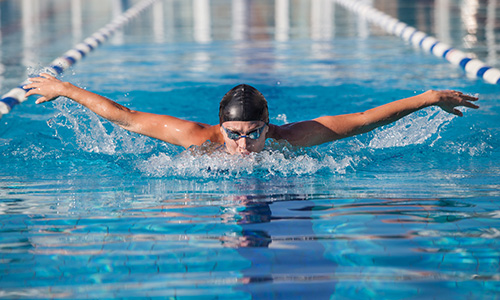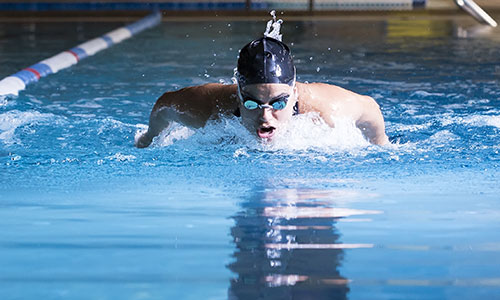How to swim butterfly stroke correctly
- Overview
- Full article
- Related articles
The basics of learning to swim can be applied to every stroke that you learn. These simple principles focus on:
Body
Legs
Arms
Breathing
Each of these stages can't be performed effectively without first perfecting the previous stage. I'm going to tell you how to get each of these stages right with the butterfly stroke, which is an advanced swim stroke.
BODY
Your body should be flat and horizontal in the water with your shoulders and hips all inline. The undulation of the body is at the heart of the butterfly stroke, and can take some practice to get used to.
Your head and chest lead the movement. As your arms enter the water push down and forwards into the water with your head and chest and let your hips and feet follow. As you pull back with your arms your head and chest will rise allowing you to take a breath. This should create a dolphin-like motion.
LEGS
In butterfly the movements of the legs are rather simple, both legs do a simultaneous whipping motion with the feet pointed. It is however the undulation of the body that is the heart of the butterfly stroke, and it takes practice to integrate the kick with undulation of the body to get propulsion.
The undulation is initiated by your head and chest before travelling down your torso, hips and then into your legs, where it ends in a dolphin-like kick. To start this your body needs to be in a horizontal position in the water, with your head in line with your torso. Arms can either extend forward or be at your sides, and your legs are close together and your feet are pointed.
Now:
ARMS

As with all swim strokes most of your propulsion will come from your arms.
Your hands will enter the water in front of your head, keeping the arms relaxed. From here pull down through the water towards your hips, going slightly outwards and then inwards again.
Keep your arms nice and wide as they exit the water again and keep up the speed.
BREATHING
Now that you have got the stroke developed you can move on to the breathing. This tends to be the part of the stroke where most people struggle.

For butterfly you breathe in as your arms pull backwards in the water. This motion pulls your head and chest out of the water to enable the breath to be taken. Make sure you lift your head to look forward instead of down, but stay as low as you can, trying to get your chin just out of the water. If you go too high your legs will drop increasing your drag and slowing your down. If you stay too low you will not be able to get your breath in. Aim to take a breath every one or two strokes.
Never attempt a swimming stroke for the first time on your own. Expert instruction is available at all Nuffield Health swimming pools.
Last updated Wednesday 21 September 2016
First published on Thursday 1 September 2016

